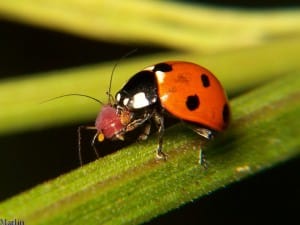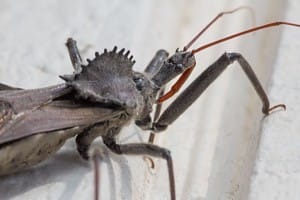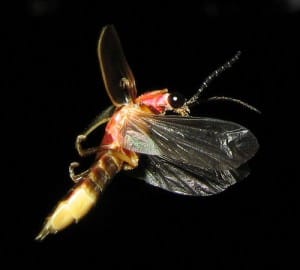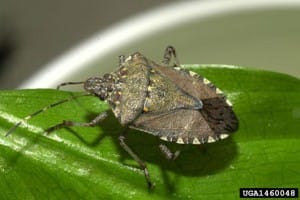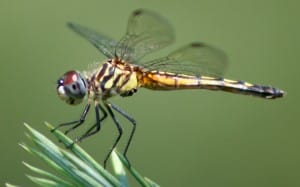Source(s): Karen Lutz, Cherokee County Master Gardener, with excerpts from various articles online
This explains how to use benefical insects for pest control in the garden
Harmful bugs account for only 1%-2% of the insect population. Here we review three basic ways to control pests in your garden without the use of chemicals but rather Mother Nature’s way:
Use of Carrot Family – Umbelliferous plants attract beneficial bugs
There are around 3000 species in the carrot family – mainly herbaceous plants native to temperate climates around the globe. What is common among them are their flower clusters, which resemble miniature flat-topped parasols. These are termed umbels from the latin word umbellula, meaning “umbrella.”
Niall Dunne of Brooklyn Botanic Garden notes that “Historically, unbellifers have been of enormous biological importance as crop plants. In modern times, however, they have something else going for them as well: they’re very attractive to beneficial insects – the so-called “good bugs” that act as pollinators, soil builders, or predators of pest insects in the landscape. Plants with umbels are magnets for predatory bugs in particular”.
Examples of umbellifers are: Dill, Coriander, Fennel, Parsnips, Cumin, Anise, Parsley, and Carrots. Lovage (Levisticum officinale) attracts ichneumon wasps, which parasitize the larvae of herbivorous insects. Fennel (Foeniculum vulgare) attracts lady beetles that prey on aphids, scale insects, thrips, mealybugs, and mites. Dill (Anethum graveolens) is good at drawing such insects as lacewings, whose larvae are known for devouring aphids.
What makes them so attractive to beneficial bugs? Dr. May Berenbaum, head of Entomology a the the University of Illinois , Urbana-Champaign, and author of Bugs in the System (Addison Wesley, 1995) says “Small flowers with accessible nectar and a nice landing platform.”
So gardeners interested in handling pests with natural predators are smart to incorporate members of the carrot family in their gardens.
Strategize – Increase the biodiversity of your garden
One would think that by simplifying things – spraying pesticides and growing just a few varieties of plants, would control pests, however, it actually encourages problems. By making the environment more complex (diverse), problems are less likely. Grow a wide range of plants (attracting beneficial bugs) and avoid broad-spectrum insecticides.
Release beneficial bugs
There are about 50 beneficial bugs raised and sold commercially today. They are either predators (eat or destroy other insects) or parasites (complete their lifecycles in a specific host). Examples include the following: ladybugs, lacewings, ground beetles, predatory stink bugs, spiders, wasps, dragonflies, damselflies, fireflies, praying mantis, predatory mites, minute pirate bugs, assassin bugs and predatory nematodes.
Releasing large quantities of good bugs in your garden can help in several ways. They may eliminate the pests right away, then disperse and die off. They may establish a local population of beneficial offspring that live from year to year reducing pests. Or, they may consume a few pests and fly away.
How you release bugs is dependent upon the type of beneficial bug you buy. You must consider the bugs’ lifecycles, local temperatures, time of day/night, food source and the method used to disperse the insects. Always keep purchased bugs cool and watered before release.
Some general examples: (excerpts from homestore.com/HomeGarden and Howard Garrett’s Basic Organic Program)
- Wasps – Encarsia wasp parasitizes the whitefly especially well in greenhouses, but works outdoors as well when whiteflies attack tomatoes or other plants. Order this parasite as soon as you notice a whitefly population building. Good control occurs only when minimum average temperatures are at least 72 F (62 F at night and 82 F in day). At these temperatures the Encarsia wasp can develop as fast or faster than the whitefly population. Insecticidal soaps and horticultural oils that you might use on whiteflies don’t harm the wasps seriously. Two releases one to two weeks apart will last the whole season. Trichogramma wasps should be released from small containers or cards attached to plants that are having trouble with pecan casebearer, cabbage worms, tomato hornworms, corn earworms and other orchard pests. These beneficial insects are tiny, gnat-like parasitic wasps that kill the eggs of all sorts of caterpillars. Because it’s hard to spot pests’ eggs and because the Tricho wasps are usually cheap, the best strategy is to plan on weekly or biweekly releases to keep up with new egg laying. The wasps arrive ready to emerge from eggs of their insectary hosts, which are glued to a card. A succession of releases allows second generations to establish.
- Lacewings – larvae are voracious and sometimes called aphid lions. They will eat anything they can subdue including thrips and small caterpillars. They are most commonly sold as eggs, mixed with a carrier like bran or rice hulls. You can also buy the larvae, however, they cost about ten times as much as eggs but may be a good value since ants and other predators often eat lacewing eggs. Purchased eggs or larvae are best used as a biological insecticide – sprinkle them near a serious outbreak of a pest. The larvae will feed in the area as long as there is plenty of prey, and then disperse. There is little point in buying adult lacewings. It’s more economical to attract one of the dozens of species native to North America. No matter where you live, there should be wild lacewings nearby, though not in as dense a concentration as you get when you release 500 or more eggs from a supplier. The adults feed on nectar and honeydew produced by sucking insects such as aphids, leafhoppers, whiteflies and mealybugs. You can build up populations of wild lacewings by applying a sugar and protein mixutre that simulates this honeydew. Dribble it onto the foliage near your garden and especially near a pest outbreak. Commercial preparations of these insect foods have names like Pred-Feed and Bug-Chow.
- Beetles (ladybugs) – The most widely available biological control is the lady beetle, Hippodamia covergens, which feeds on small soft-bodied insects, especially aphids. These good bugs are field collected rather than reared in insectaries, largely because they aggregate in large masses in the foothills of California and are easily gathered when dormant. Releasing them in your garden is fun but does almost no good against a pest outbreak. Released preconditioned lady beetles (fed long enough to have mature eggs) will stay in your garden as long as the food supply lasts, eating aphids and laying eggs to produce larvae. Ladybugs can be purchased in mesh bags or in small box containers, which contain 1,500 bugs in a pint up to 70,000 bugs in a gallon. For aphid control, spray the foliage with water and release the bugs directly on the infested plants. Do it at dusk or early in the morning. You can concentrate local populations in your garden by attracting adults. Use the artificial honeydews and plant nectar and aphid- host sources, especially alyssum, legumes or flowers in the umbellifore family.
- Predatory Mites – Various species of mites are sold to control spider mites and thrips, especially on greenhouse crops and indoor plantings. Some of them also work on outbreaks on roses, strawberries, fruit trees, eggplant and other garden plants. Each species has different requirements for temperature and humidity, so discuss your needs with the supplier when you order. All predatory mites require high humidity (70% or more). They also prefer to forage on plants without hairy leaves. Release predatory mites early in the season. Watch for incipient spider mite or thrips populations, then order predatory mites immediately by phone. The mites are perishable and require special shipping, around $20 per 1,000. Your concentrated population of mites will disperse when the food source becomes scarce, so you will need to order more mites if outbreaks occur later in the season. Mites are very susceptible to soap sprays and other insecticides, so use soaps only before the mites arrive.
- Predatory Nematodes – Nematodes, or roundworms, teem in the soil of lawns and gardens. Some are major plant pests but the majority feed on soil microorganisms. A few prey on insects, injecting them with lethal bacterial, then feeding on the resultant “goo”. Several strains and species of predatory nematodes are produced and sold. Purchased nematodes generally need to be released annually to provide dependable control. New techniques of packaging mean nematodes can be stored several months at room temperature which is why they are showing up in garden centers.
Beneficial Insect Release Schedule (per acre or per residential lot)
- April- May: Release trichogramma wasps @ 10,000 to 20,000 eggs weekly for four to six weeks. Release green lacewings @ 4,000 eggs weekly for four weeks.
- May- September: Release ladybugs as needed on aphid infested plants. Release green lacewings @ 2,000 eggs every two weeks as needed.
The smart gardener can adequately control pests by incorporating all three of these methods into the garden landscape.
Resources
- www.planetnatural.com
- www.hgtv.com/hgtv/gl_diseases_pests_insects
- www.biconet.com/reference/HGbeneficials
Center Publication Number: 85
- How to Attract or Release Beneficial Insects in Your Garden - September 24, 2013
